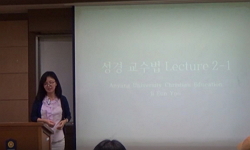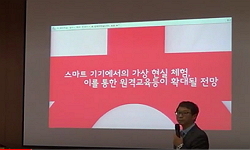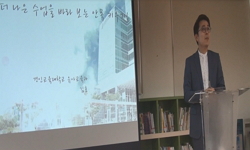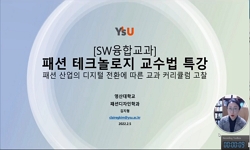Studies on teaching methods for teaching Japanology has been recently conducted. In particular, research on the design and implementation of real-time online classes has emerged after the spread of the COVID-19 and thus the research findings on their ...
http://chineseinput.net/에서 pinyin(병음)방식으로 중국어를 변환할 수 있습니다.
변환된 중국어를 복사하여 사용하시면 됩니다.
- 中文 을 입력하시려면 zhongwen을 입력하시고 space를누르시면됩니다.
- 北京 을 입력하시려면 beijing을 입력하시고 space를 누르시면 됩니다.

일본학 교육을 위한 실시간 화상강의 수업설계와 실천 ― <한일관계의이해> 수업 사례를 중심으로 ― = Pedagogical Design and Practice for a Real-Time Online Class for Japanology
한글로보기https://www.riss.kr/link?id=A107990318
- 저자
- 발행기관
- 학술지명
- 권호사항
-
발행연도
2021
-
작성언어
-
- 주제어
-
등재정보
KCI등재
-
자료형태
학술저널
- 발행기관 URL
-
수록면
15-31(17쪽)
- DOI식별코드
- 제공처
-
0
상세조회 -
0
다운로드
부가정보
다국어 초록 (Multilingual Abstract)
Studies on teaching methods for teaching Japanology has been recently conducted. In particular, research on the design and implementation of real-time online classes has emerged after the spread of the COVID-19 and thus the research findings on their effects and limitations are not sufficient. This article attempt to fill this void by analyzing a case of designing and implementing a real-time online course on < Understanding Korea-Japan Relationship > which was offered to Japanese majors in the Department of Japanese Language and Literature at C university located in Gwangju. The ultimate purpose of this study is to provide pedagogical implications for teaching Japanology through the analysis of this particular online course. The results of the study can be summarized as follows: First, the non-face-to-face mode itself was not a factor that lowered the level of learner satisfaction of the course. In fact, in the real-time video lecture, the course objective was achieved as successfully as in the face-to-face class, with a sense of presence and liveliness mostly maintained throughout the online course. The analysis of the online discussion contents and the end-of-semester course evaluation indicated the successful achievement of the course objective and the high level of learner satisfaction. Secondly, by using the zoom chat window, all learners were able to actively participate in the online discussion. The finding that the online mode indeed induced all learners, not just some learners, to participate actively in the discussion is encouraging in that it indicates the advantage and possibility of the online mode in terms of the high level of learner participation. Lastly, it was found that the learners’ scores of the written test decreased compared to the face-to-face lecture due to several factors including the unfamiliar non-face-to-face test system, learners’ difficulty in answering 100% descriptive questions, and the lack of test time. It is suggested that such test-related issues as the diversification of question types, adjustment of difficulty level, and allocation of appropriate test time should be resolved in order to introduce the non-face- to-face test system.
동일학술지(권/호) 다른 논문
-
온택트 시대의 일본 전통 문화 교육 방안 ― ‘일본박(日本博)’ 프로젝트와 2020 도쿄 올림픽 사례를 중심으로 ―
- 한국일본어교육학회
- 김미진 ( Kim Mijin )
- 2021
- KCI등재
-
- 한국일본어교육학회
- 박정이 ( Park Jeong Yi )
- 2021
- KCI등재
-
비대면 환경에서의 일본문화 교육 방안 연구 ― 영화를 활용한 수업 사례를 중심으로 ―
- 한국일본어교육학회
- 임다함 ( Daham Yim )
- 2021
- KCI등재
-
온라인 교양 일본어 수업 실천 사례연구 ― 학습자들의 만족도와 효과성을 중심으로 ―
- 한국일본어교육학회
- 장윤아 ( Jang Yun Ah )
- 2021
- KCI등재




 KCI
KCI KISS
KISS






